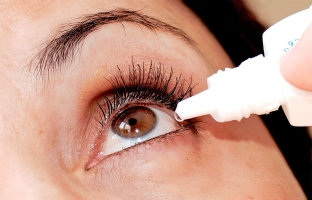Practically everyone has had an allergic reaction at least once in their life. The human body is very susceptible to the effects of various environmental factors. In some cases, an allergy can manifest itself with quite violent clinical symptoms, which cannot be ignored. In some – manifestations can be so minimal that a person does not perceive them as something serious, but, nevertheless, the body reacts to the allergen. The mucous membrane of the eyelid, called the conjunctiva, is highly sensitive to allergens. Allergic conjunctivitis is precisely such a reaction of the conjunctiva.
Characteristics of the main types of allergic conjunctivitis
Allergic conjunctivitis is somewhat less common than conjunctivitis of a bacterial or viral nature. This disease occurs as an inflammatory reaction of the conjunctiva with an increased, genetically determined sensitivity of the body to the effects of a particular allergen. On the part of the organ of vision, the conjunctiva most often gives an allergic reaction, about 90% of all eye allergies have this particular localization. Quite often, allergic conjunctivitis is combined with other allergic diseases, such as atopic dermatitis, bronchial asthma or allergic rhinitis. Spring catarrh, hay fever and drug conjunctivitis are the most common forms of allergic conjunctivitis.
Allergic conjunctivitis:
- spring Qatar – common form of allergic conjunctivitis;
- features of the course of drug allergic conjunctivitis;
- pollinosis or seasonal allergic conjunctivitis: symptoms and treatment.
Spring Qatar – common form of allergic conjunctivitis
Spring Qatar – This is an allergic conjunctivitis that occurs when the human body is hypersensitive to ultraviolet rays. The disease most often develops in children aged 5 to 12 years, and often has a persistent chronic course. There are three forms of spring catarrh:
- conjunctival form: on the conjunctiva of the cartilage of the upper eyelid, papillary growths are observed, on the surface of the conjunctiva - a viscous filiform discharge;
- limbal form: growth of a gelatinous-looking ridge of pink or yellow-gray color in the limbus region is characteristic;
- mixed form: the lesion of the limbus zone is combined with the lesion of the conjunctiva.
For the treatment of various forms of spring catarrh, glucocorticosteroid therapy is used, in combination with antihistamines, mast cell membrane stabilizers and desensitizing therapy.
Features of the course of drug allergic conjunctivitis
Drug conjunctivitis is a form of allergic conjunctivitis in which an allergic reaction occurs as a result of the use of medications. Most often, drug conjunctivitis develops as a result of long-term use of local medicines. In the clinical picture of the disease, such symptoms as vitreous chemosis of the conjunctiva, its papillary hypertrophy, hyperemia of the conjunctiva of the eyelids, accompanied by itching and burning, come to the fore. Occasionally, subconjunctival hemorrhages may appear. For the treatment of drug conjunctivitis, it is necessary, first of all, to cancel the drug that caused the allergic reaction. In addition, the patient is shown taking topical glucocorticosteroid drugs.

Pollinosis or seasonal allergic conjunctivitis: symptoms and treatment
Pollinosis is a seasonal allergic conjunctivitis, which is caused by the pollen of various trees, grasses and cereals during their flowering period. Such inflammation of the mucous membrane of the eyes is often combined with damage to the skin, respiratory organs, gastrointestinal tract or other organs. Pollinosis – this is an allergic reaction of an immediate type, so the disease is characterized by an acute onset. In the clinical picture, a pronounced unbearable itching in the eyelid region comes to the fore, against which skin edema develops, hyperemia of the edges of the eyelids, pronounced swelling of the conjunctiva and the appearance of a transparent thick discharge in the conjunctival cavity. The most effective treatment for hay fever is specific hyposensitization with pollen allergens, which must be carried out outside the period of exacerbation of the disease.







Add a comment